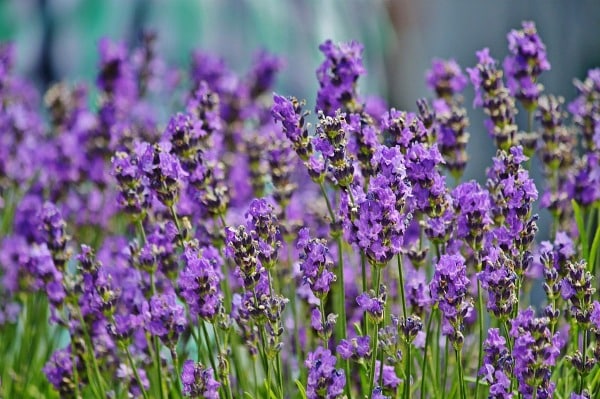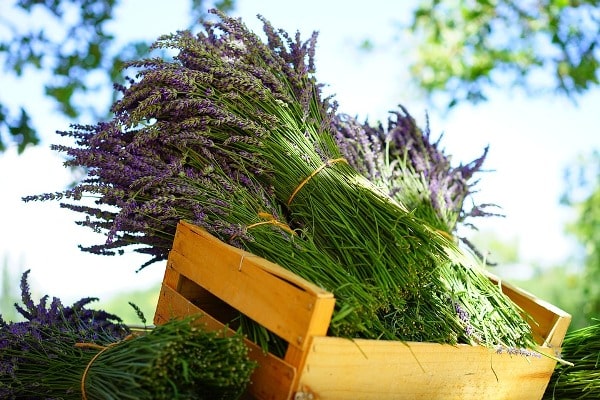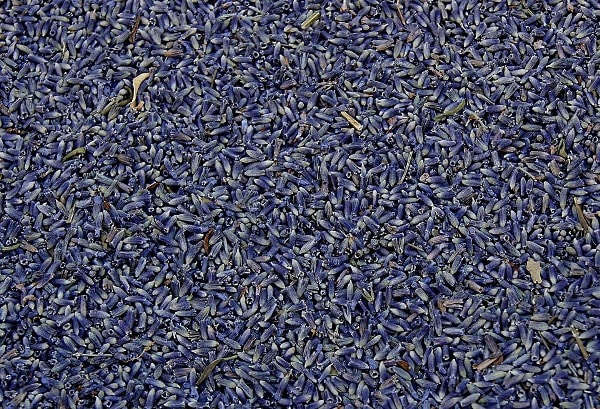Lavender oil extraction process
Today, we discuss the topic of Lavender Oil Extraction Process and Techniques.
What is Lavender oil? Lavender oil is an essential oil formed by distillation from the flower spikes of certain species of lavender. Lavender is grown in northern Africa and the Mediterranean mountains, often in the extraction process of its essential oils. The medicinal advantages of using lavender to treat anxiety, fungal infections, hair loss, and wounds have been demonstrated. The evidence does not yet support the use of lavender to treat depression, high blood pressure, nausea, menstrual pain, or eczema, and among other conditions. Lavender is not approved by the Food and Drug Administration (FDA) and must not be taken in place of approved and prescribed medicines.
Is Lavender oil safe?
By using essential oils like lavender oil is one of the best holistic tactics that you can incorporate into your life. However, there are a few important guidelines to remember when using lavender essential oil.

Using diluted lavender oil topically or in aromatherapy is normally considered safe for most adults, but may not be recommended for children. Applying pure lavender oil to the skin (especially open wounds) may also cause irritation, so recommend infusing it with a carrier oil, such as olive oil or coconut oil. Dissolving it in water also works well.
Be careful not to rub lavender oil in eyes and mucous membranes. If this happens, wash it out immediately. Lavender oil can cause allergic reactions in people with unusually sensitive skin, so do a spot test before using it. Simply apply a drop of Lavender oil to arm and see if any reaction occurs.
Harvesting:
How to harvest Lavender plants? Harvesting lavender is a great method to tidy up unruly plants and will give you a whole bunch of inspiration for projects throughout the year. There are an accurate way and the ideal time to cut lavender flowers that are best for both the dried flowers and the plants.
Every year this beautiful flowering herb overwhelmed us with its seductive scent, particularly during the harvest. Lavender blooms at different times all over the season. It generally depends on the climate, the weather and blooming period of lavender variety. Lavender harvesting begins from the end of the spring until summer and even later.
Harvest time depends upon the end product. Lavender grown for either fresh-market or dried bundles, must be harvested when the first one or two flowers have bloomed on the stem. If the flowers are in bloom at harvest, the bundles will drop most of the Lavender flowers and buds from the stems after drying. If the end products are buds, then lavender must be harvested when approximately one-quarter to one-half of the lavender flowers on the stem are in bloom. However, if the end product is an essential oil, the optimum time to harvest is when about half of the flowers on the stem have withered. The Lavender oil accumulation is at its maximum, and quality is typically at its peak.

Lavender should be dry when harvested. Harvesting when wet can cause discoloration, mold in bundled lavender and can potentially affect chemical changes in the essential oil that can reduce quality. It is also ideal not to harvest when it is very hot, which can cause wilting and oil reduction. The best time for harvesting time is from mid-morning until early afternoon.
Lavender flowers can be harvested in different ways. For the home flower garden or the small lavender farm, the flower stems are frequently cut and Lavender harvested by hand. The ideal tool used is a curved, serrated blade with a handle. Large commercial Lavender farms use more modern mechanized techniques to harvest lavender flower. Large harvesters are driven during the blooming flower fields where the lavender stems are cut and the flowers are placed into a cart towed behind ready to go to the distillery. This is more cost effective for the growers as they can harvest their Lavender flower quickly, drying lavender when the essential oil content is at its peak.
Lavender oil extraction:
How is Lavender oil extracted? Lavender essential oil is extracted from the steam distillation of the fresh or partly dried leaves. This generates a greater amount of oil compared to other techniques due to the reduction of polar compound loss. Harvest of lavender blooms is typically around June month. Lavender flowers are compacted into a still. Fewer air pockets in the still effect in greater oil yield. A boiler is then used to steam the bottom of the lavender flower filled still at low pressure. The Lavender flower pockets containing oil are broken from this heating procedure and a pipe of cold water is run through the center of the still. The hot Lavender oil vapor condenses on the cold pipe with the cold water and then collected into a holding tank where it is allowed to settle. Due to the polarity and the densities of the oil and water, these two will divide in the holding tank whereupon the water is piped out, leaving just Lavender essential oil.

Composition of Lavender oil:
The lavender essential oil has a chemically complex structure with over 150 active constituents. This Lavender oil is rich in esters, which are aromatic molecules with antispasmodic (suppressing spasms and pain), calming and stimulating properties.
The main botanical constituents of lavender oil are linalyl acetate, Linalool (a non-toxic terpene alcohol that has natural germicidal properties), terpinen-4-ol, and camphor. And other constituents in Lavender oil that are responsible for its antibacterial, antiviral, anti-inflammatory properties.
Lavender oil distillation:
Essential lavender oil is produced using an extraction method called steam distillation. Lavender at our farm is harvested for the distillation process in the morning once the dew has evaporated. The harvest of our lavender for oil distillation is generally in September when the plant is in full bloom and has begun to wither. We use two 100 gallons food-grade, stainless steel pots for the distillation of our lavender oil. A plant that means stems and flowers are loaded into the pots, sealed and low-pressure steam begins to flow through the tank. Temperature is monitored throughout this procedure to ensure that the highest grade of oil and hydrosol is obtained. During this procedure the steam causes the plants oil glands to erupt, and the oil evaporates into the steam. At this point, the steam is routed through our custom copper tubing on its way to the condenser where cold water running during the coils cools the steam, which condenses it back to a high-grade liquid of oil and hydrosol. Passing steam through copper tubing helps to get sweet, higher quality oils. This procedure was used in early distillation processes in France. At this point the Lavender water and Lavender oil are separated into their respective containers, the essential oil, being lighter than water, rises to the surface of the condensate, and is collected in a beaker attached to the separator.
Lavender offers a custom distillation for lavender growers and we also have a smaller distillation tank for custom oils and hydrosols such as rose geranium, calendula, cucumber and other herbs for the manufacture of cosmetics, etc. Our lavender oils are very fragrant and the very best quality. We do not use chemicals in the extraction of the oils and we guarantee them to be “100% pure essential oils.”
Cost of Lavender oil and steam distillation unit:
The cost of Lavender oil is approximately Rs 1,800/ Kilogram.
Steam distillation unit cost approximately – Rs 8 Lakh/ Piece.
Equipment used in the Lavender oil extraction process:
List of machinery used in the extraction of Lavender oil is;
- Evaporator vessel
- Condenser
- Cooling tower
- Florentine flask
- Steam boiler
- Pump (condensate)
- Pump (cooling water)
Steam distillation of Lavender oil extraction process:
What is steam distillation? This process is a widely used procedure of extracting the essential oil from plant material when the products are temperature sensitive and can be damaged by too high a processing.
Steam Distillation is the most popular technique used to extract and isolate essential oils from plants for use in natural products. This happens when the steam vaporizes the plant material’s volatile compounds, which eventually go through a condensation and collection procedure.
Steam distillation is a separation method which is used for separating a mixture of components which are heat sensitive by using steam. The principle is based on variation in the boiling point of reducing the partial pressure of volatile components. Steam distillation has important application in petroleum refineries, extraction of volatile compounds of plants which were used in perfumery and flavoring industries. Catnip is extracted using steam distillation. The steam distillate content has two parts, essential oil, and distillation water. The steam distillate is subjected to solvent extraction where the secondary essential oil is extracted.
The oil is extracted from the entire plant using a distillation element consisting of a distillation tank, a condenser, and a separator. Freshly harvested grass as such or after cutting into little pieces is loaded into the distillation tank. After closing the lid tightly, steam is entering into the tank. Steam and the oil vapor condense into liquid in condenser & are collected in the separator.
Steam distillation process:
A large container called a Still, which is generally made of stainless steel, containing the plant material has steam added to it. Through an inlet, steam is injected during the plant material containing the desired oils, releasing the plant’s aromatic molecules and turning them into vapor.
The vaporized plant compounds travel to the condensation flask or condenser. Here, two separate pipes make it probable for hot water to exit and for cold water to enter the Condenser. This process makes the vapor cool back into liquid form.
The aromatic liquid by-product drops from the condenser and collects inside a receptacle underneath it, which is known as a Separator. Because water and oil do not mix, the Lavender essential oil floats on top of the water. From here, oil is siphoned off. (Some essential oils are heavier than water, such as clove essential oil, so they are creating at the bottom of the Separator.)
Benefits of Lavender Oil
Some of the benefits of Lavender oil are given below;
- Relieve pain: Lavender oil can help ease sore or tense muscles, joint pain, and rheumatism, sprains, backache, and lumbago. Apply and massage lavender oil onto the affected area.
- It helps form scar tissues, which may be essential in healing wounds, cuts, and burns. Lavender can help soothe insect bites and itchy skin.
- Lender oil a natural anti-inflammatory, so it helps reduce itching, swelling and redness.
- Lavender oil improves your digestion. This oil helps stimulate the mobility of your intestine and stimulates the production of bile and gastric juices, which may help treat stomach pain, indigestion, flatulence, colic, vomiting, and diarrhea.
- Improve blood circulation: It helps lower elevated blood pressure levels and could be used for hypertension.
That’s all folks about lavender oil extraction process and methods.
Read: How to Grow Artichokes in Pots.
Hi
We would like purchase some essential oils from you…please get in touch with us
Is it advisable to extract lavender oil through super critical CO2 method.
I am interested in information on grow teas and herbs for resale, where can I get current information on this subject?